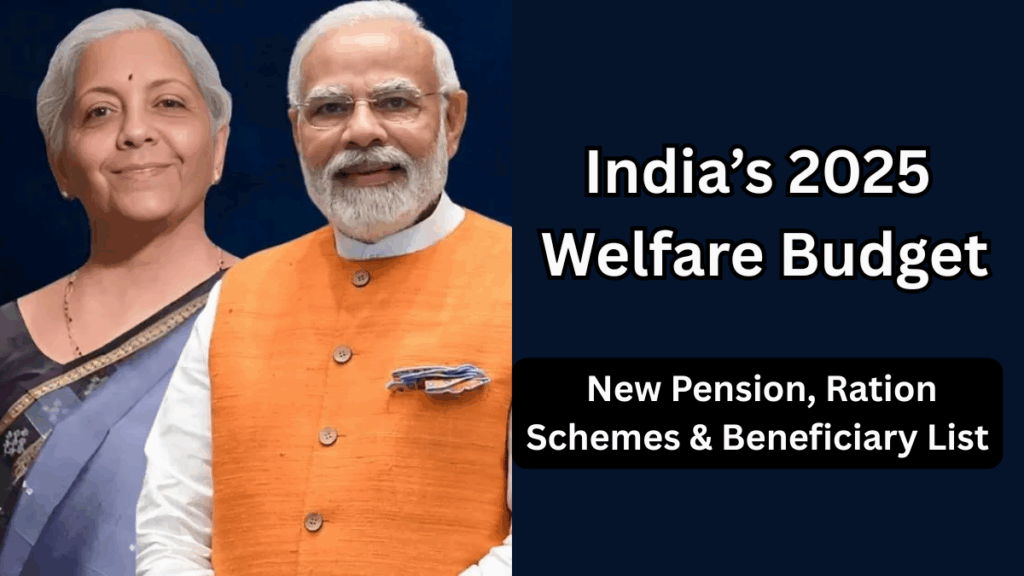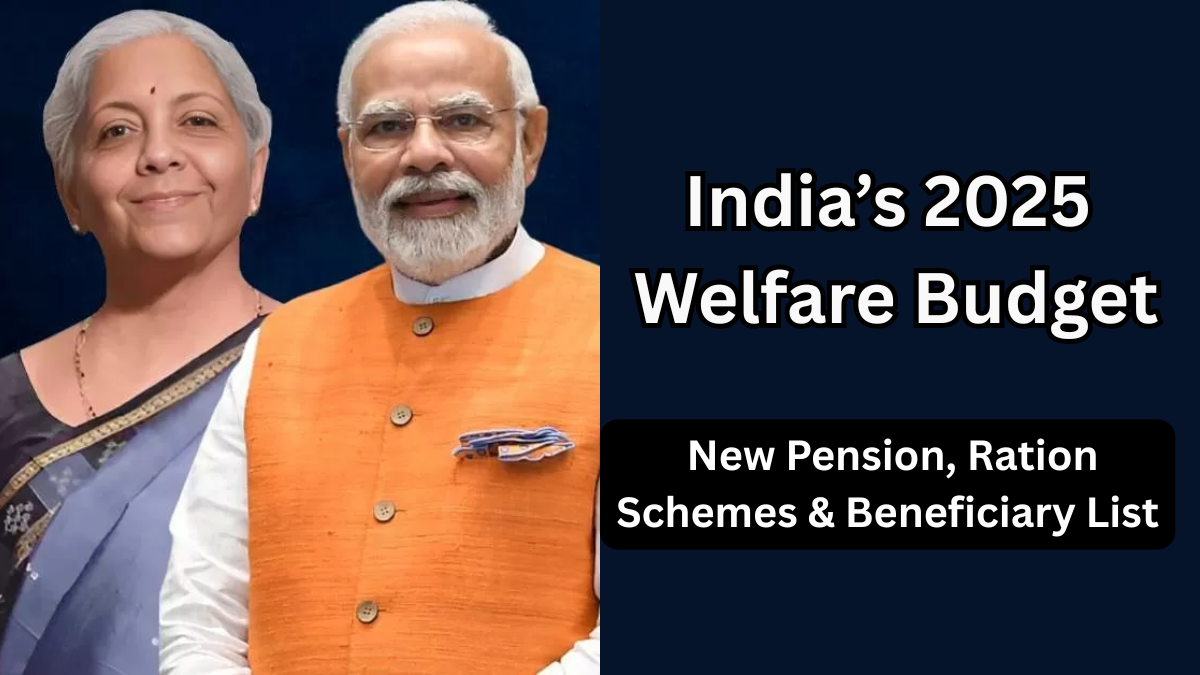The India Social Welfare Budget 2025 has introduced several new initiatives aimed at improving the quality of life for millions of citizens. With a special focus on pension & ration schemes, the government aims to provide financial security, food support, and targeted assistance to vulnerable groups.
In this article, we break down the highlights, eligibility details, and how beneficiaries can access these programs.

Key Highlights of India Social Welfare Budget 2025
The 2025 welfare budget emphasizes financial inclusivity and food security. Here are the main features:
-
Enhanced Pension Schemes
-
Increased monthly payouts for senior citizens, widows, and differently-abled individuals
-
Simplified registration process for pension beneficiaries
-
-
Expanded Ration Programs
-
Additional subsidies for staple foods under the Public Distribution System (PDS)
-
Coverage expansion to include more urban and rural households
-
-
Digital Beneficiary List
-
Updated online portal for checking eligibility and status of benefits
-
QR-code-based verification to streamline ration card access
-
-
Focus on Marginalized Communities
-
Special schemes for women-headed households, senior citizens living alone, and low-income families
-
Pension Schemes: What’s New in 2025
The government has made significant changes to existing pension programs:
| Scheme | Beneficiary | Monthly Benefit | Key Update |
|---|---|---|---|
| Senior Citizen Pension | Citizens 60+ | ₹4,000 – ₹6,000 | Increased payouts |
| Widow Pension | Widows above 40 | ₹3,500 | One-time bonus for festivals |
| Disability Pension | Differently-abled citizens | ₹3,500 – ₹5,000 | Online application simplified |
| Indira Gandhi National Old Age Pension | Low-income seniors | ₹3,000 | Automatic linkage with Aadhaar |
These adjustments aim to provide stable income support to vulnerable citizens and reduce financial stress.
Ration Schemes: Who Benefits?
Ration schemes under the 2025 budget are designed to ensure food security:
| Scheme | Eligible Beneficiaries | Key Benefits | Changes in 2025 |
|---|---|---|---|
| National Food Security Act (NFSA) | Low-income households | 5 kg rice/wheat per person/month | Extended coverage to 20% more households |
| Antyodaya Anna Yojana | Poorest families | 35 kg ration per month | Increased quantity and nutritional supplements |
| Urban Ration Support | Urban slum dwellers | Subsidized staples | Online application and home delivery trial |
These pension & ration schemes ensure citizens have access to basic necessities without financial strain.
How to Check Your Beneficiary Status
The government has made it easier to verify eligibility and track benefits:
-
Visit the official social welfare portal
-
Enter your Aadhaar or ration card number
-
Check status, upcoming payments, or ration delivery schedule
-
Download beneficiary certificates if needed
Digital tools now allow real-time updates, making the process faster and transparent.
Additional Measures in India Social Welfare Budget 2025
-
Increased allocations for healthcare and nutrition programs
-
Special assistance for farmers and agricultural laborers
-
Integration of AI and digital systems for fraud detection and smooth benefit distribution
These measures strengthen the overall social safety net and ensure benefits reach the intended recipients.
FAQs
Q1: Who can apply for the new pension schemes in 2025?
A1: Senior citizens above 60, widows, and differently-abled individuals meeting the income criteria can apply. Eligibility details are available on the official social welfare portal.
Q2: How can I check if my household is included in the updated ration schemes?
A2: Visit the government’s online portal and enter your Aadhaar or ration card number to verify your status.
Q3: Are the pension & ration schemes available for urban residents?
A3: Yes, the 2025 budget has expanded coverage to include urban households, especially slum dwellers and low-income families.
Q4: When will the new benefits be disbursed?
A4: Pension payments and ration subsidies are scheduled monthly, and exact dates are updated on the online beneficiary portal.
Click here to learn more
